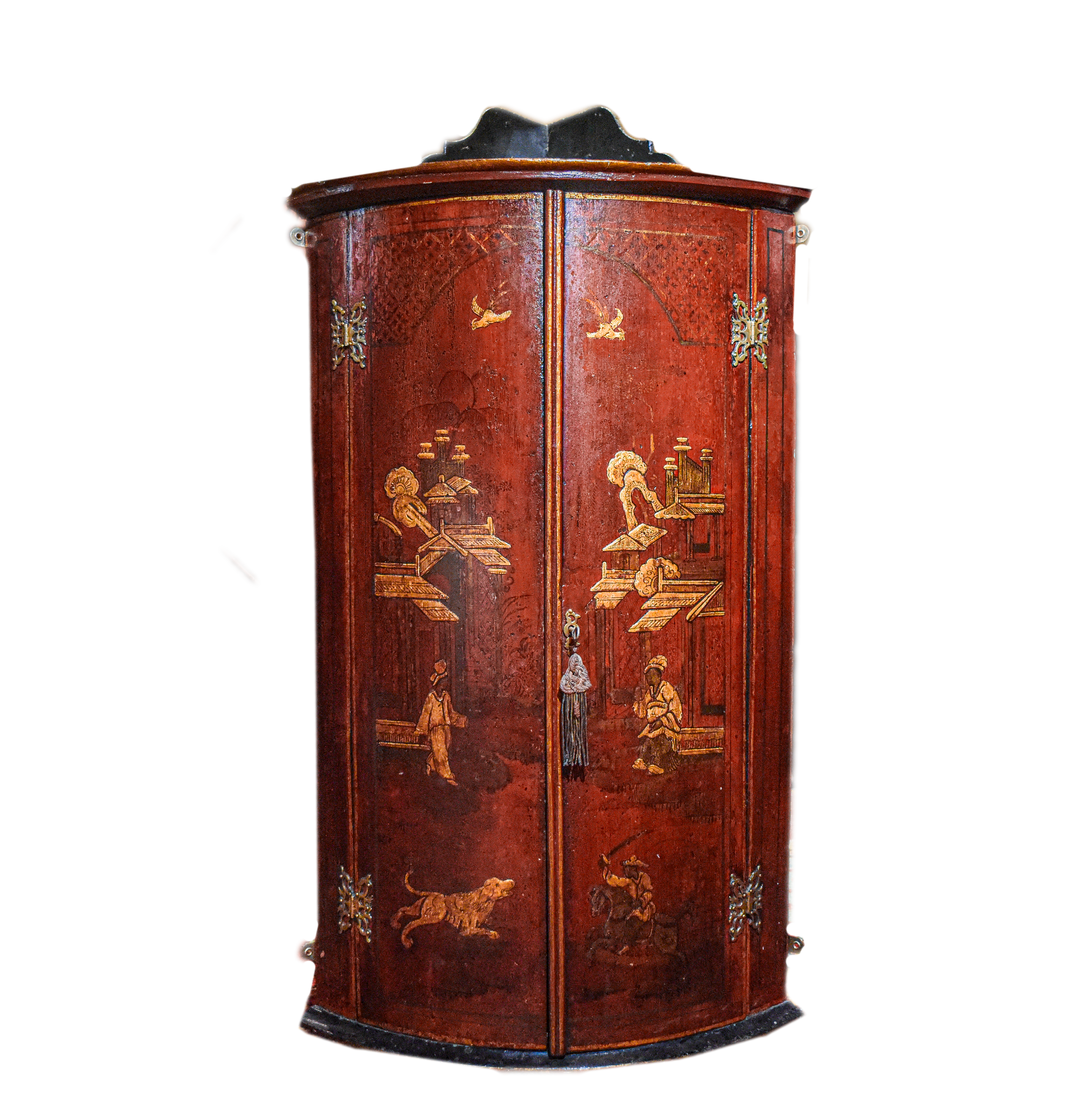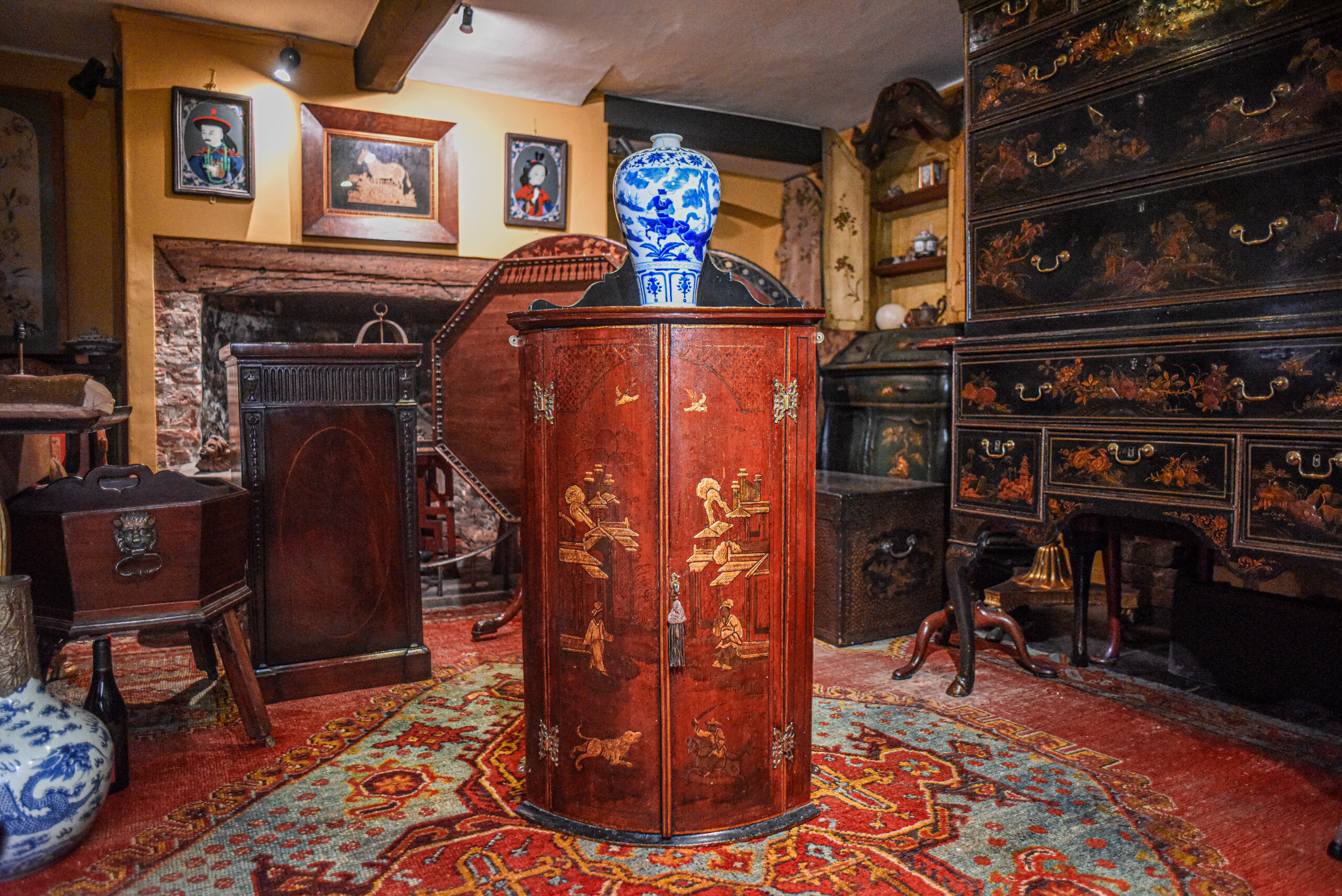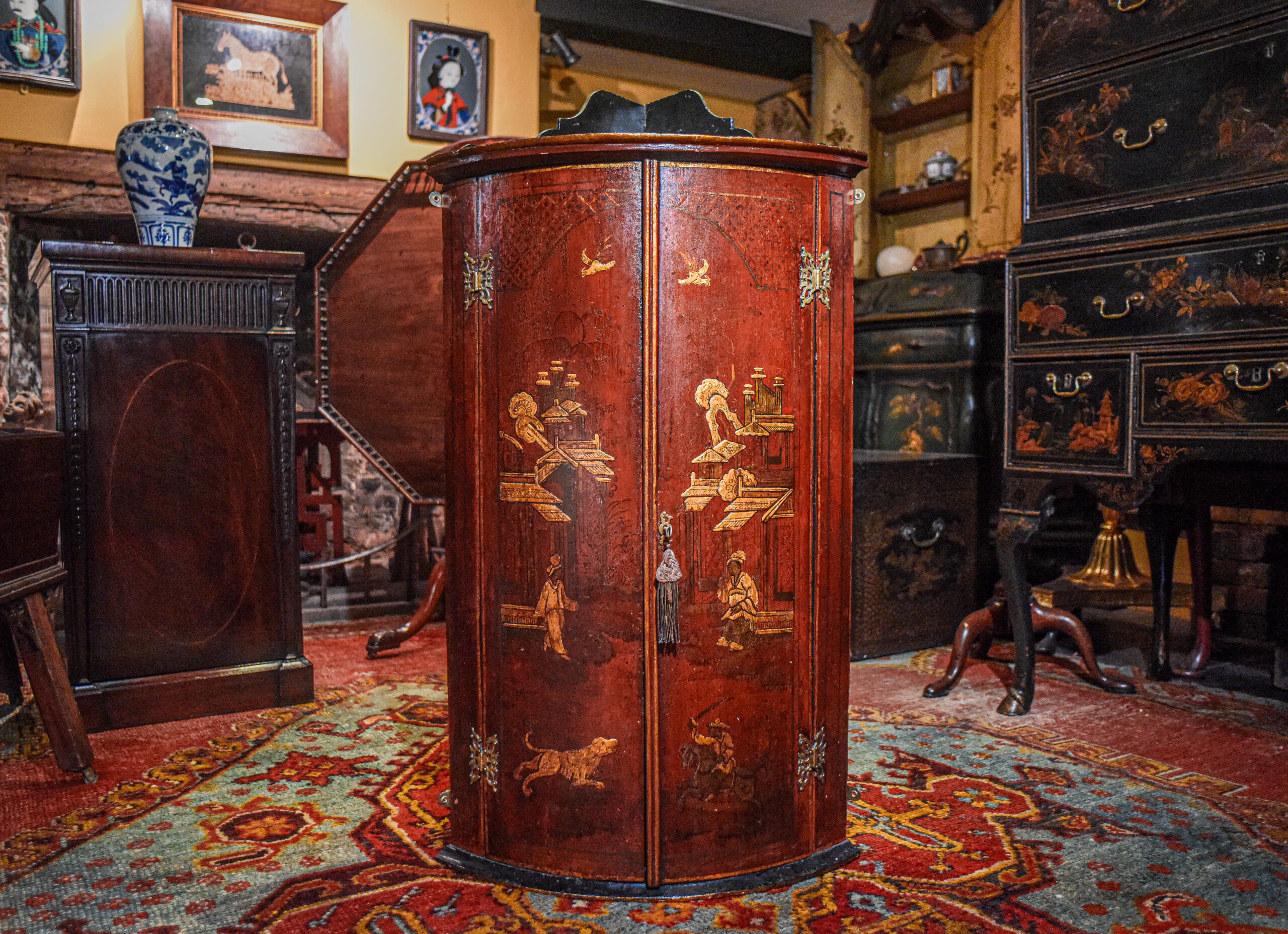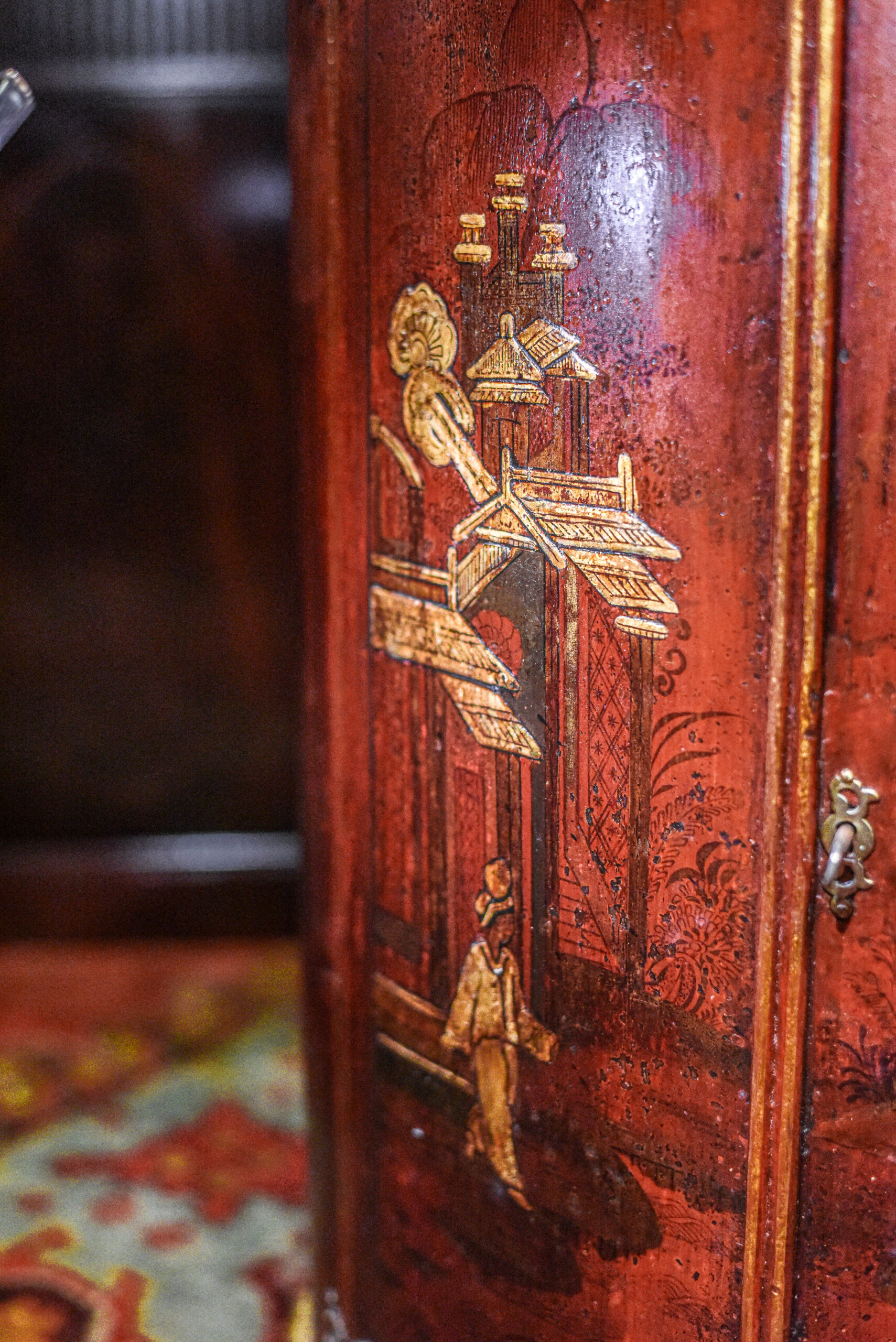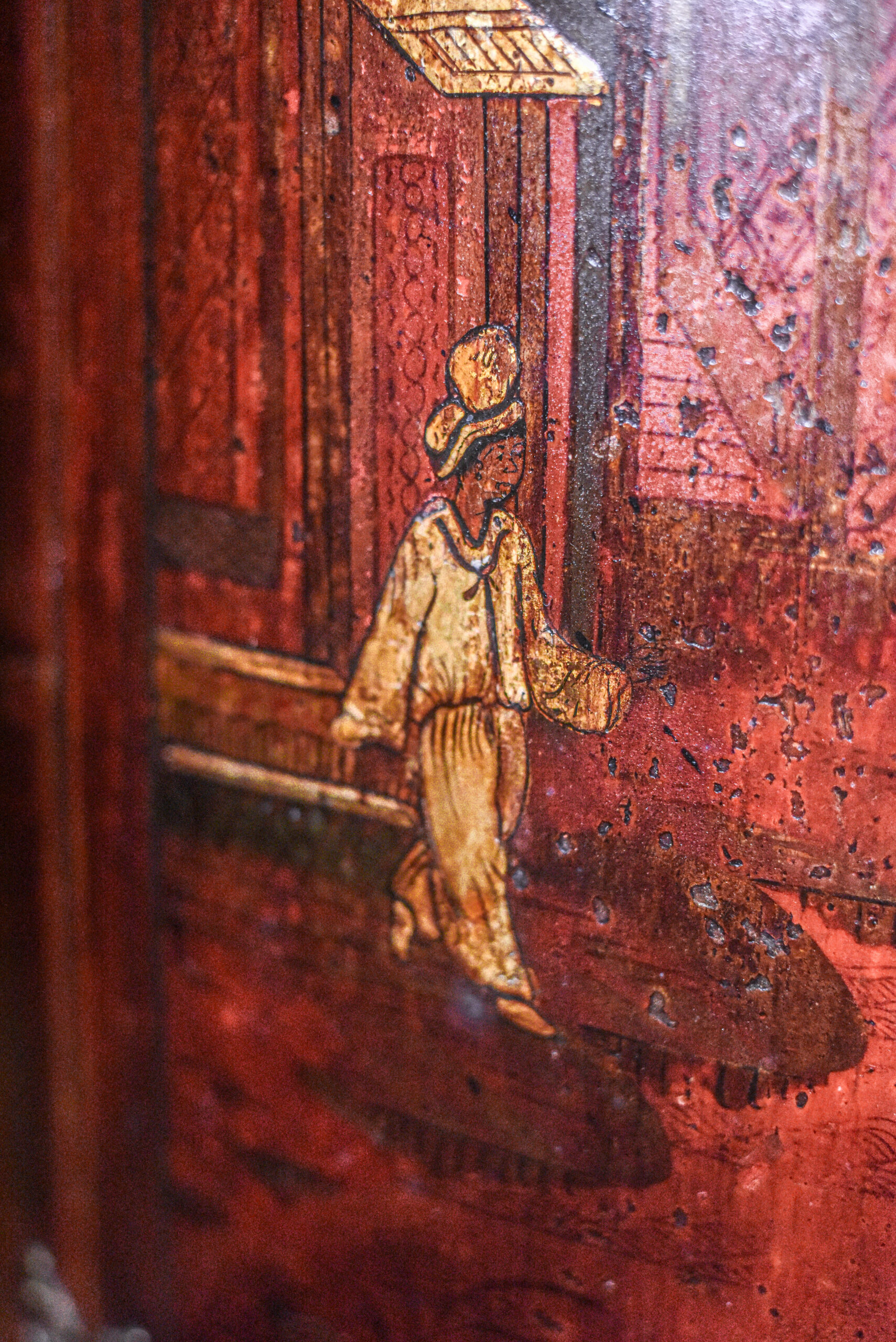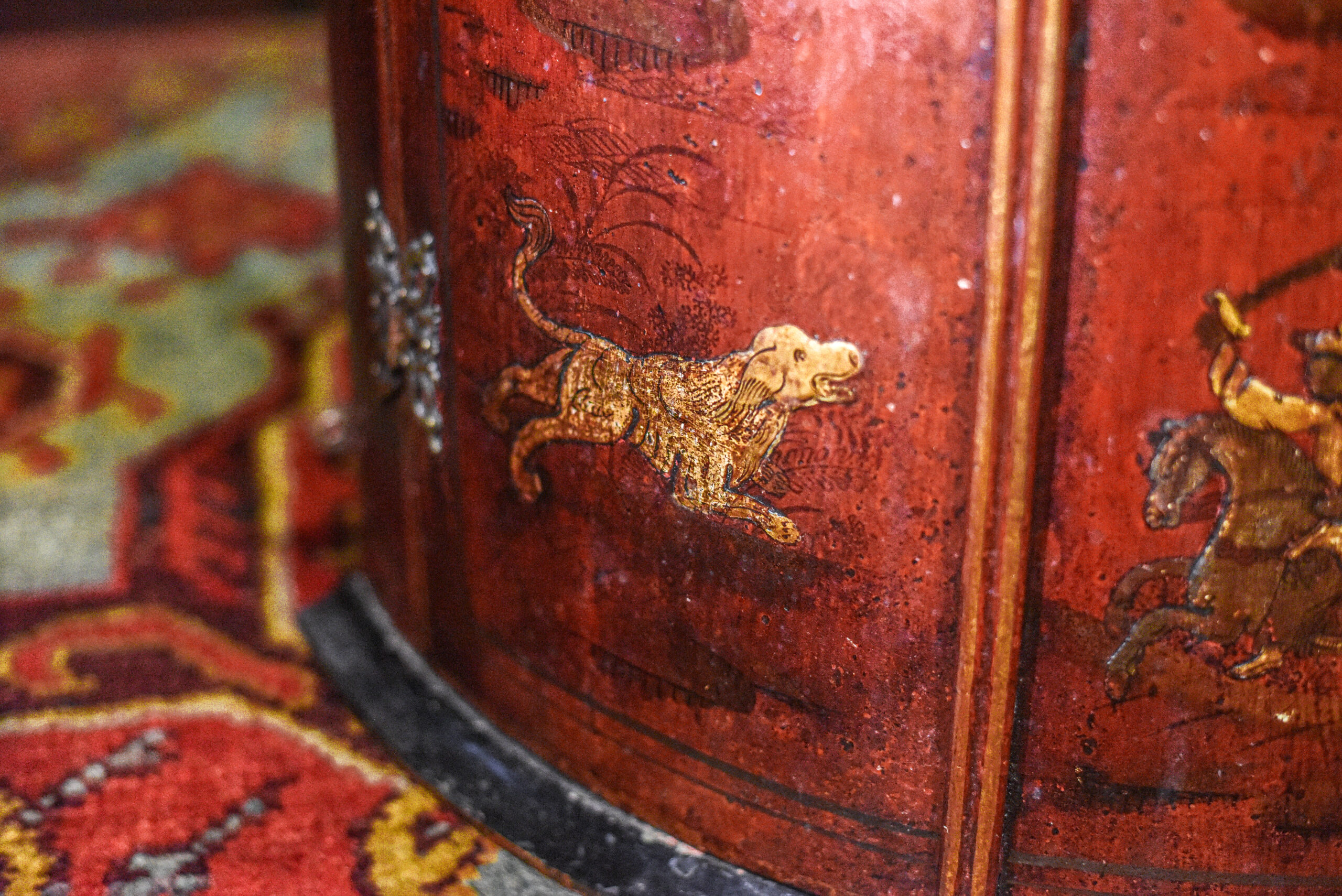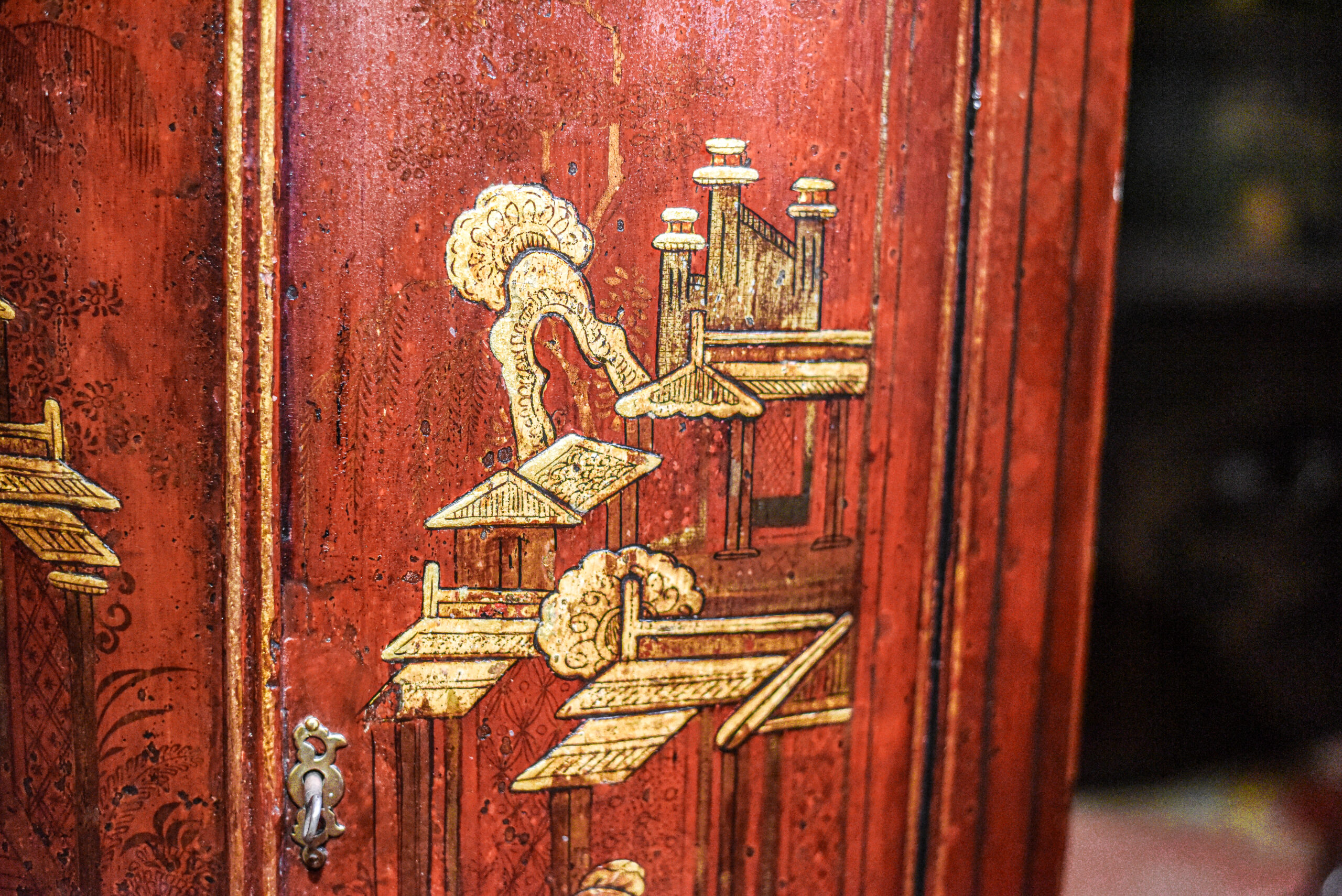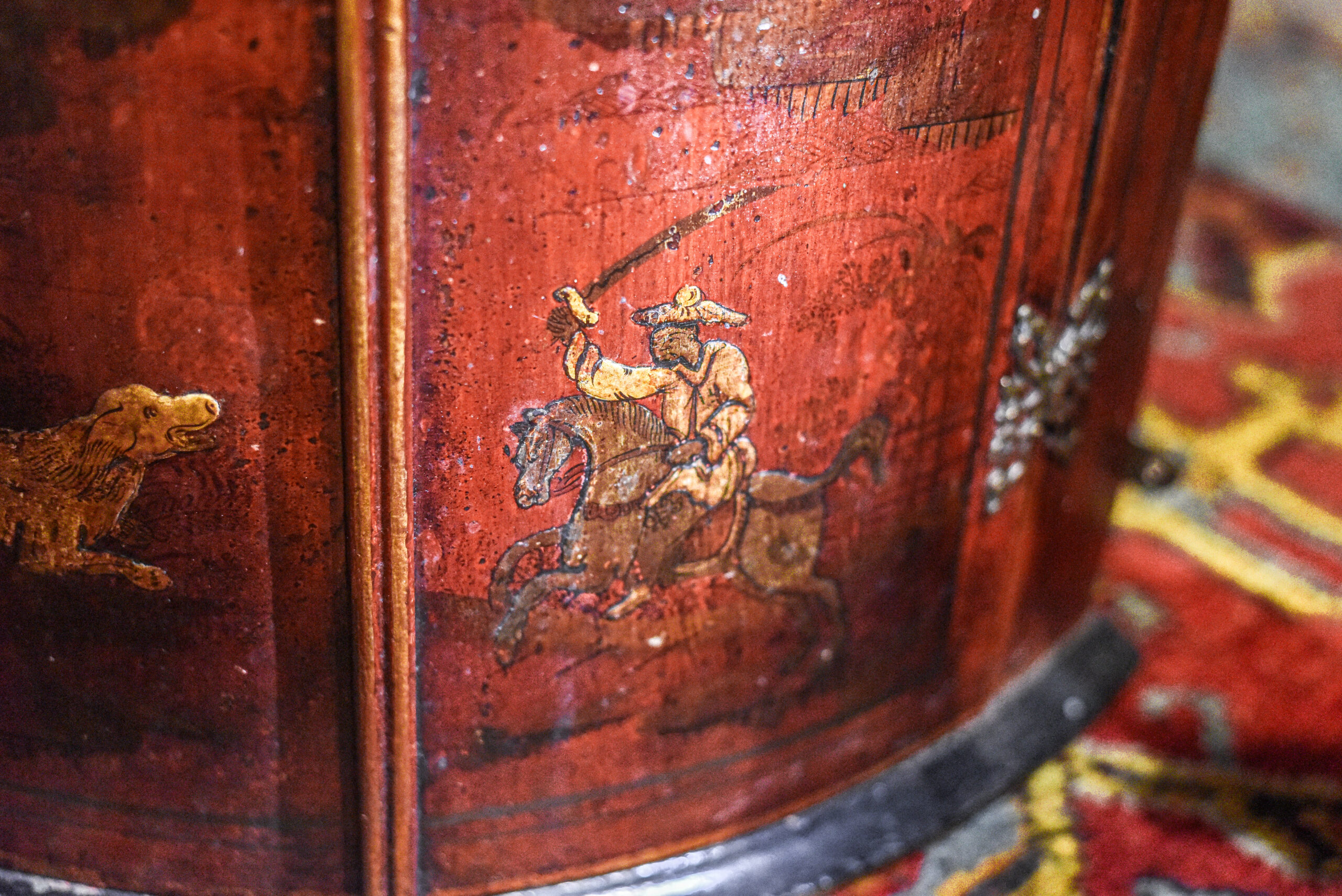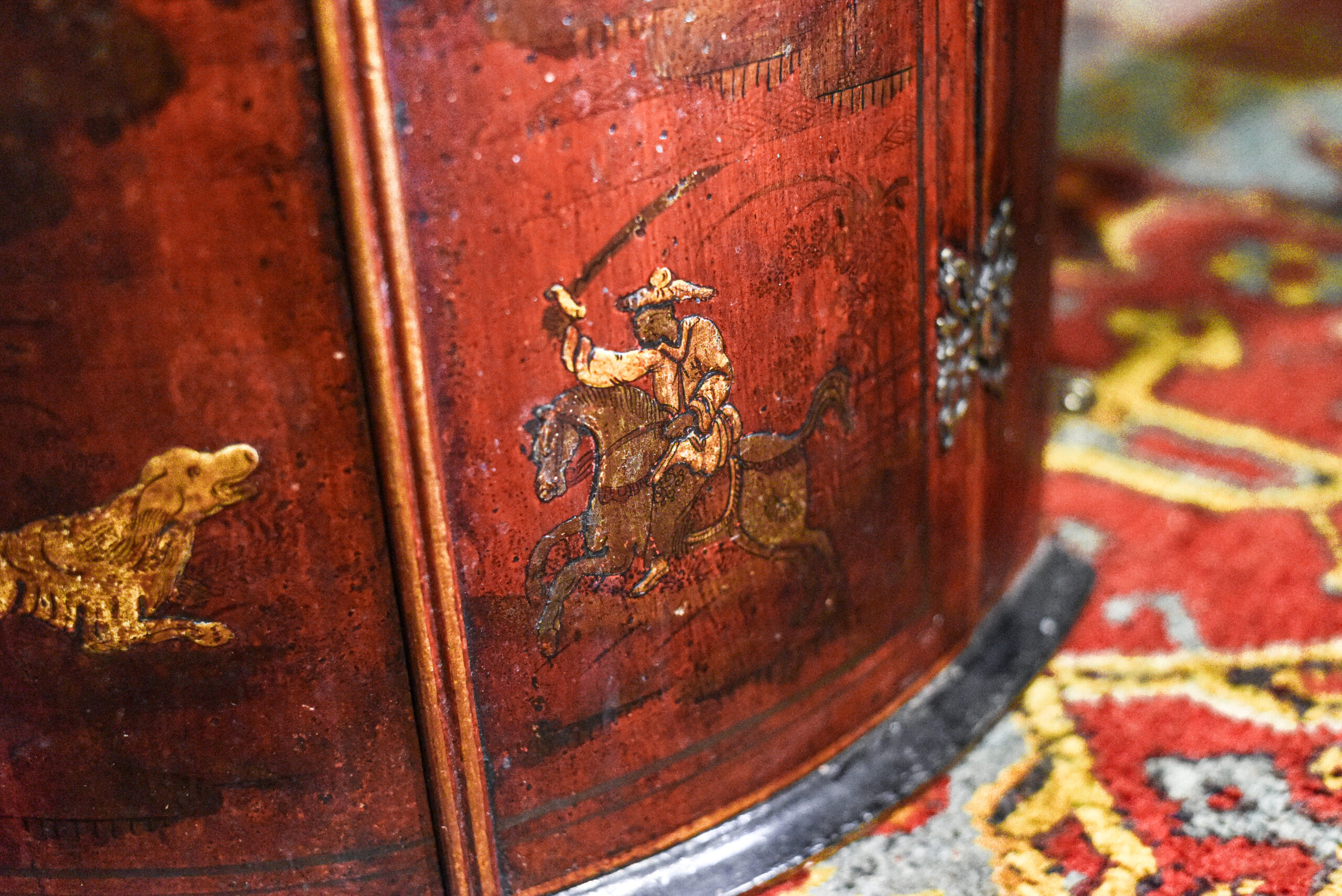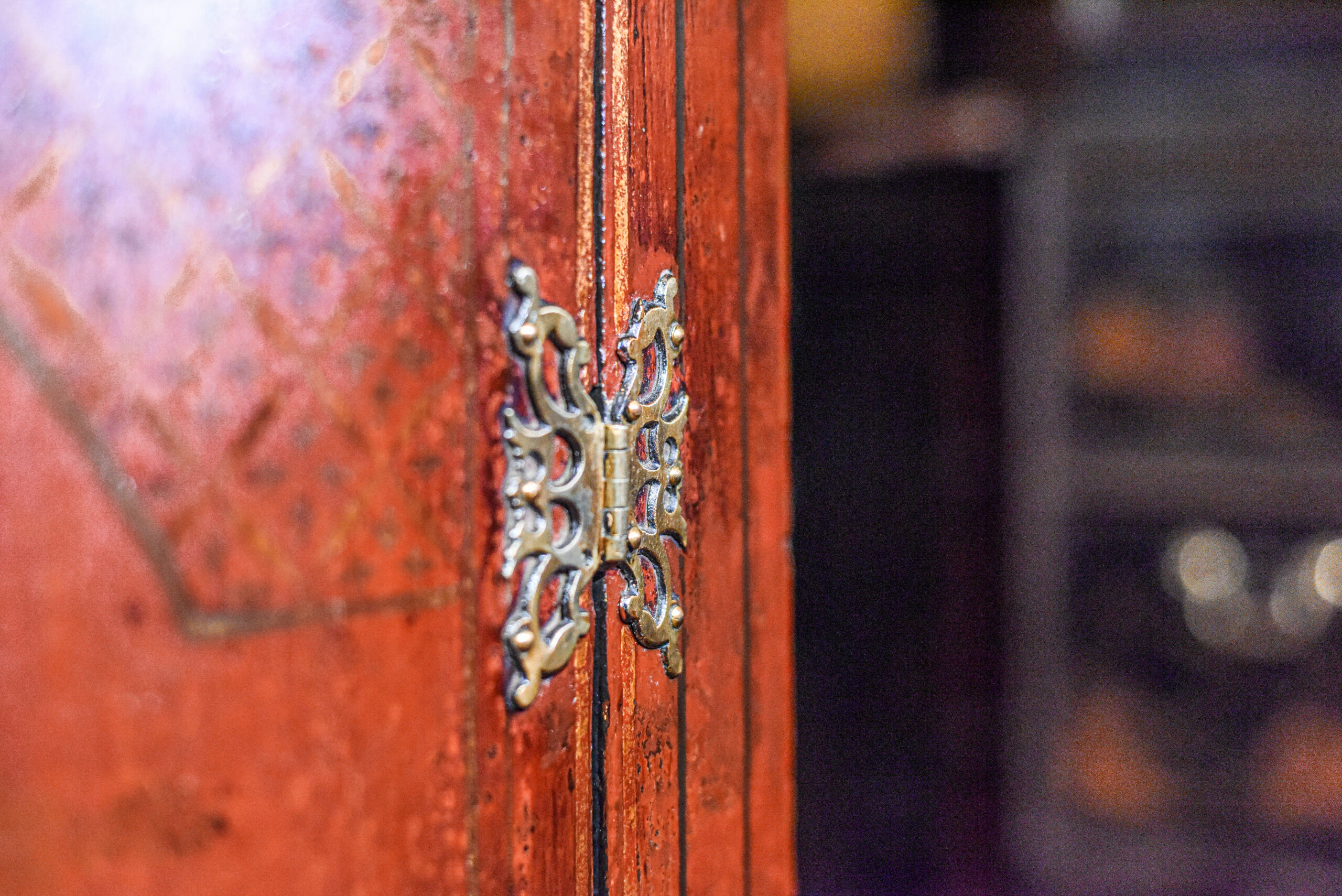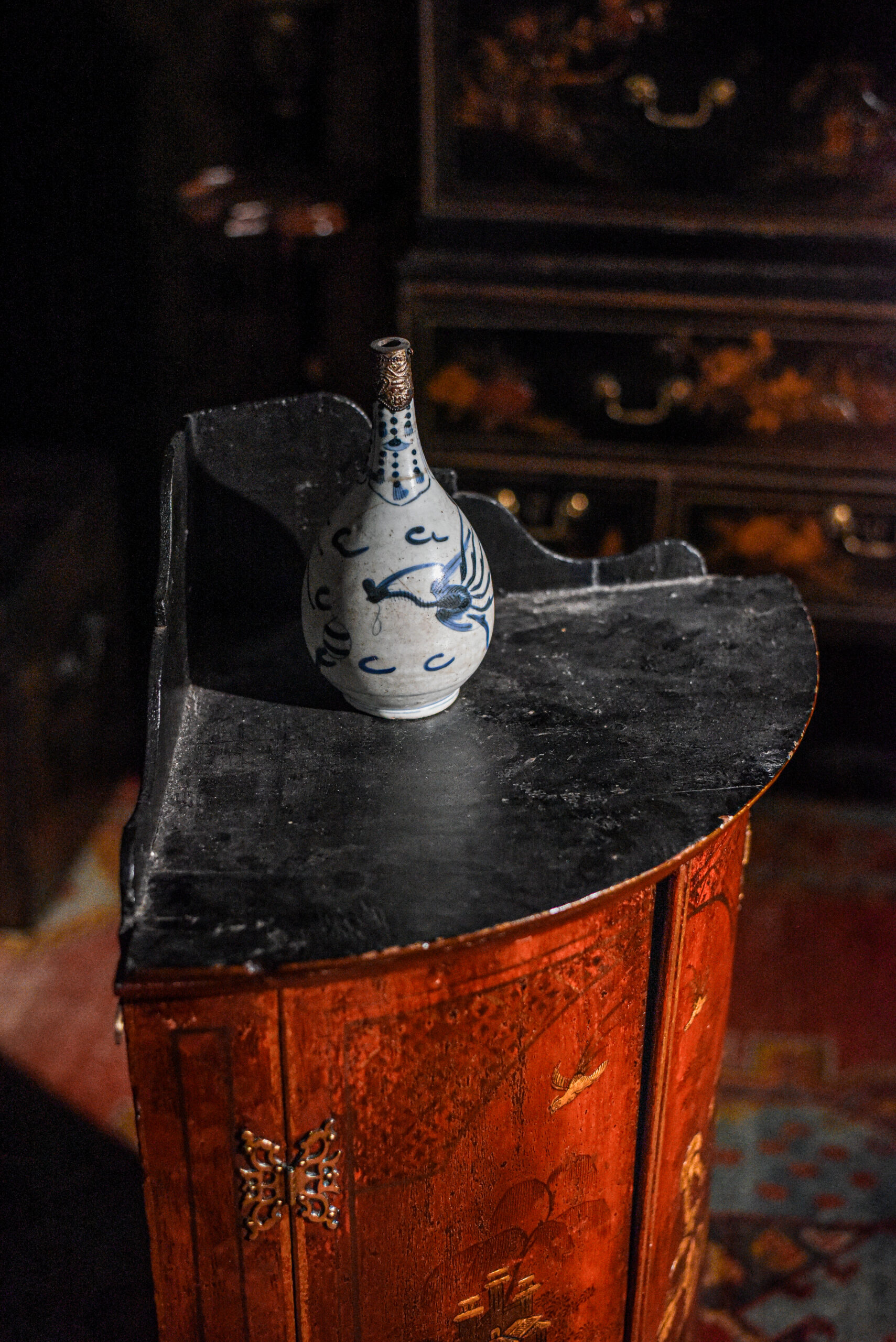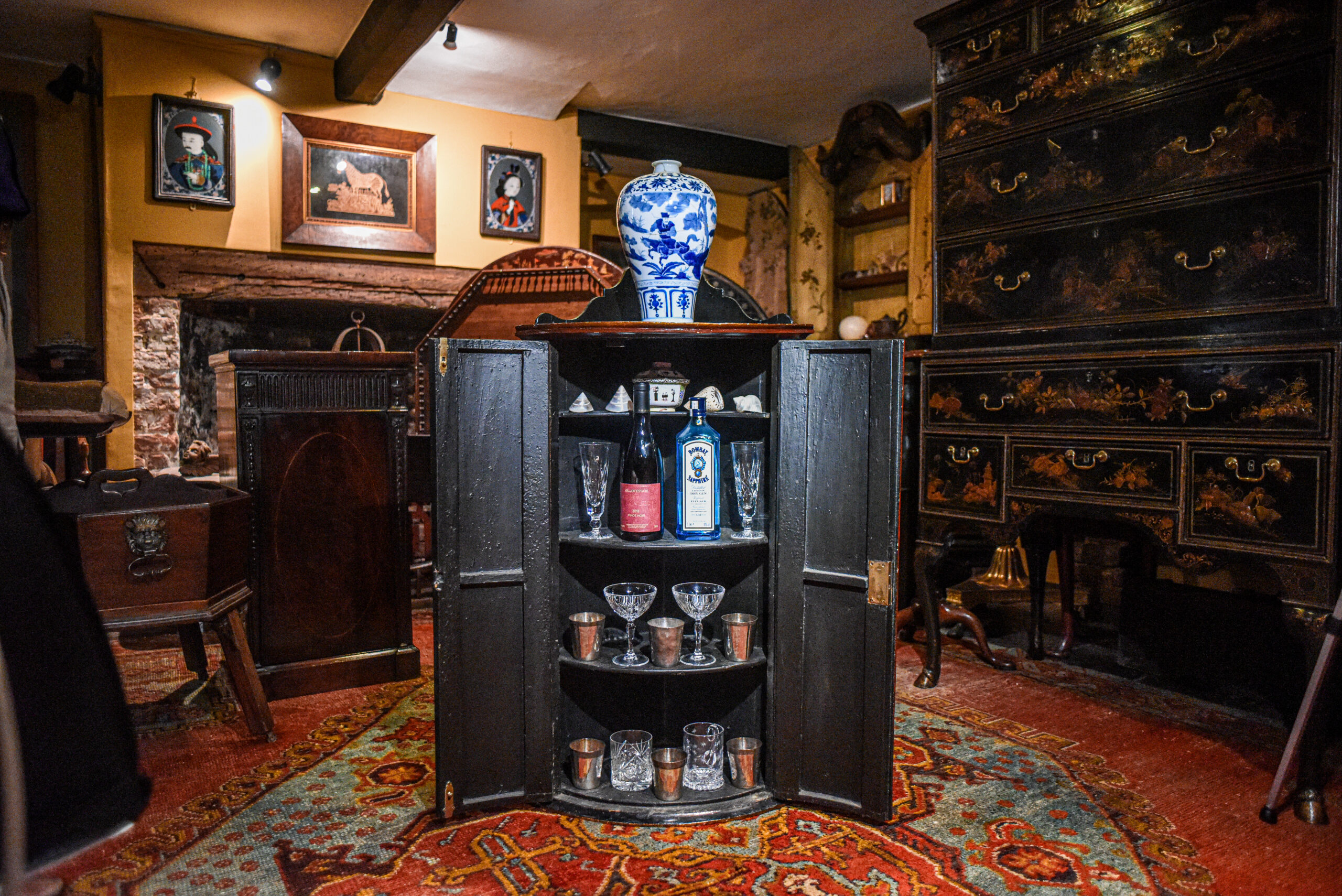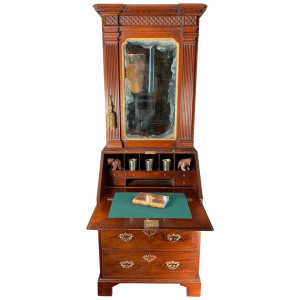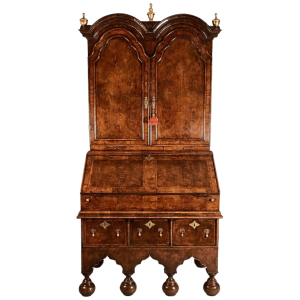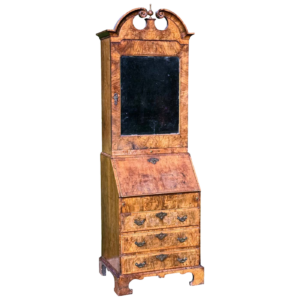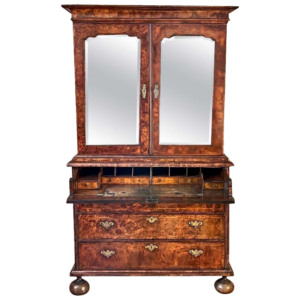Description
An English early-eighteenth century red japanned bow-front corner cupboard, or cabinet.
George II-period, circa 1730.
In superb condition throughout. Retaining its original butterfly hinges, with a period key and working lock.
These are usually encountered with a black background, however, when in red these examples of japanning are much sought after. Many were produced domestically, often by talented female members of the family.
Note the charming English interpretations in the decorated surfaces.
An unusual subject can be seen in the base; a hunter on horseback with sword drawn, confronting a mythological beast, probably representing a tiger, with mandarins posing amongst stylised pagodas, rooftops and rockwork.
Chinoiserie-decorated surfaces were extremely popular in the early part of the 18th century, almost reaching a craze among the upper classes wishing to demonstrate their fashionable status. There were several revivals of chinoiserie particularly during the first quarter of the 20th century, so caution is advised in one’s collecting. This type of decoration is also sometimes erroneously referred to as ”lacquer’’.
The fashion icon Coco Chanel furnished her exquisite Paris apartments largely in the European chinoiserie taste.
References:
V & A – The development of English black japanning 1620-1820
A History of Japanning in England: Technique & Decoration
John Stalker and George Parker published a lengthy manual entitled A Treatise on Japanning and Varnishing (1688).
Literature and further reading:
Herbert Cescinsky, English Furniture Of The Eighteenth Century, George Routledge & Sons (1911) vol. I; various interesting, related illustrations.



